Key points: How Pluto was discovered
Mercury, Venus, Earth, Mars, Jupiter, and Saturn have all been known since ancient times
Uranus was discovered by chance by Herschel in 1781
Neptune was discovered in 1846, ostensibly as a result of calculations to explain deviations in the position of Uranus, but substantial luck was involved.
These objects complete the list of "real" planets.
Pluto was discovered basically by chance by the self-taught astronomer Clyde Tombaugh in 1930. For historical reasons, Pluto is often called a planet; however, it has recently been re-classified as the first discovered of a large number of bodies orbiting generally outside the planetary zone, in a region we call the "Kuiper Belt." Pluto's properties are very different from the terrestrial and giant planets, and appear to be representative of other Kuiper Belt objects.
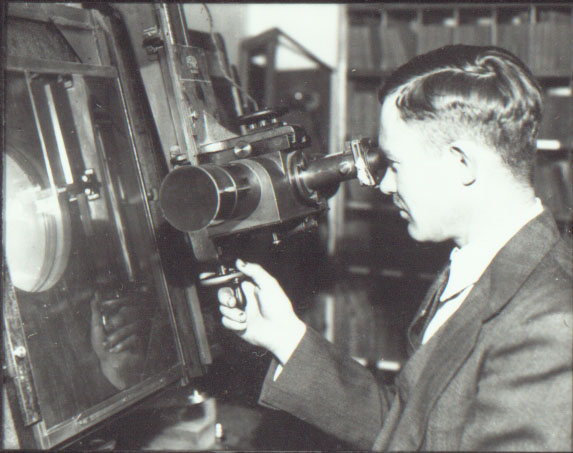 |
He analyzed repeat photographs of the sky using a
"blink comparator" to compare pairs of photos and look for moving objects.
The blink comparator showed two pictures of the sky alternatively with a
second or so between images, so the eye could pick out anything that changed
between them. http://www.planetary.org/pluto_75/plutodiscovery1_180205.html
|
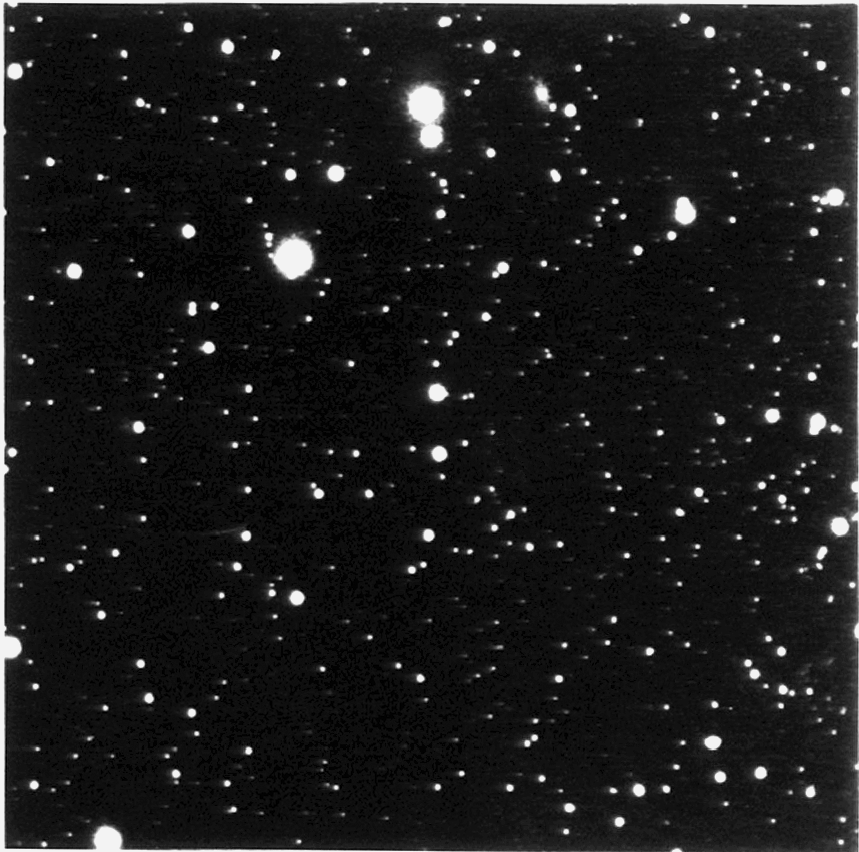 |
| Are your eyes as sharp as Tombaugh's? Can you find Pluto in the pictures above (they are the original
discovery pictures from Jan 23 and 29, 1930)?
http://upload.wikimedia.org/wikipedia/en/c/c6/Pluto_discovery_plates.png
If you are having trouble, look here |
Tombaugh spent about 7000 hours (3.5 working years) at the blink comparator before he found Pluto. And he found it after he had searched only a small part of the sky -- it was just luck that it was there, since the predictions he used to guide his search turned out to be bogus!
To learn more, try http://www.klx.com/clyde/pluto.html
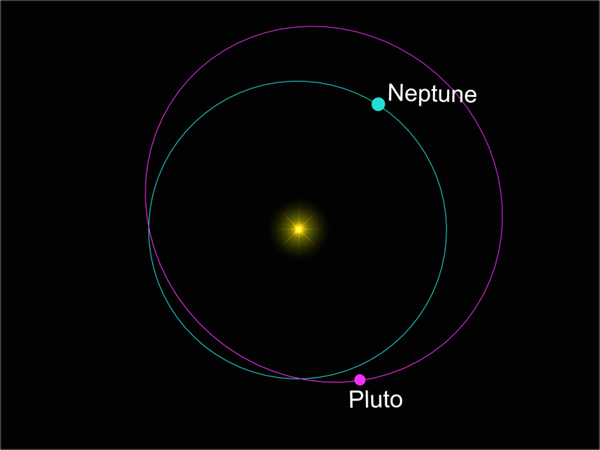 |
Normally Pluto is more distant from
the Sun than even Neptune, but its orbit is so eccentric that
sometimes it gets closer to the Sun than Neptune. Pluto was at perihelion just a few years ago in 1989 (and recall that since Pluto takes 248 years to orbit the Sun, this is the first perihelion since it was discovered in 1930). From JPL, http://www.jpl.nasa.gov/releases/99/pluto990209.html |
| In fact, Pluto's orbit is peculiar in other ways - it is quite inclined compared with the rest of the system, which otherwise have orbits all lying nearly in the same plane (from Swinburne Center for Astrophysics and Computing, http://astronomy.swin.edu.au/features/gallery/animation/). |
|
Because of its great distance from the Sun (39 AU*, or 39 times the distance of the earth; sunlight takes 8 hours to reach Pluto), Pluto's surface is very cold, 35-45 degrees K, so most compounds are frozen solid. Pluto has a density of 2.0 grams/cm3, implying that it must not be just ice but must also have a significant rocky component. Pluto has a reasonably large moon, Charon, which is about half as big as Pluto is. Both bodies are shown in the HST image below left. Charon is covered with water ice, similar to the icy moons of Saturn, Uranus, and Neptune. Four more much smaller moons were recently discovered with HST. As shown below right, Pluto is tiny compared with the earth and even with Earth's moon; the combined Pluto-Charon mass is only 1/6 that of Earth's moon;
* Remember that the radius of the Earth's orbit is an "astronomical unit," abbreviated as "AU."
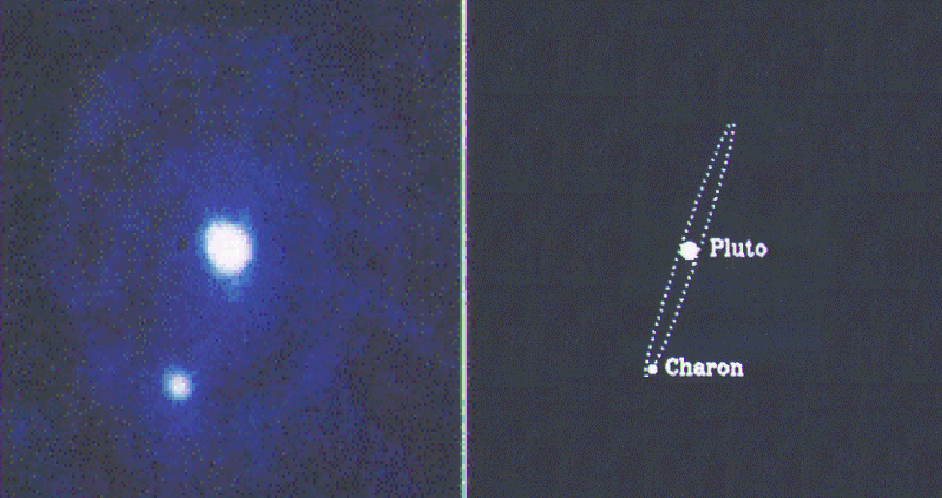 |
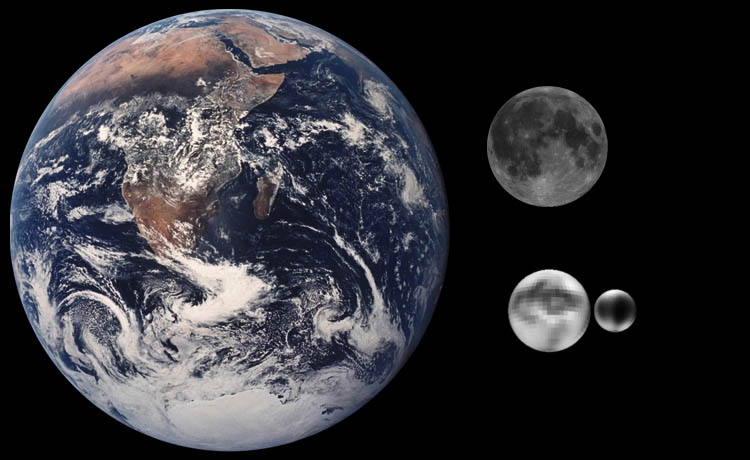 |
Until 2015, we knew little about it because no space mission had visited. When the New Horizons spacecraft got to Pluto and sent pictures, they were spectacular and dumbfounding!!
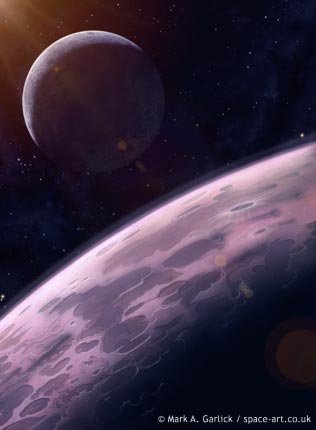 |
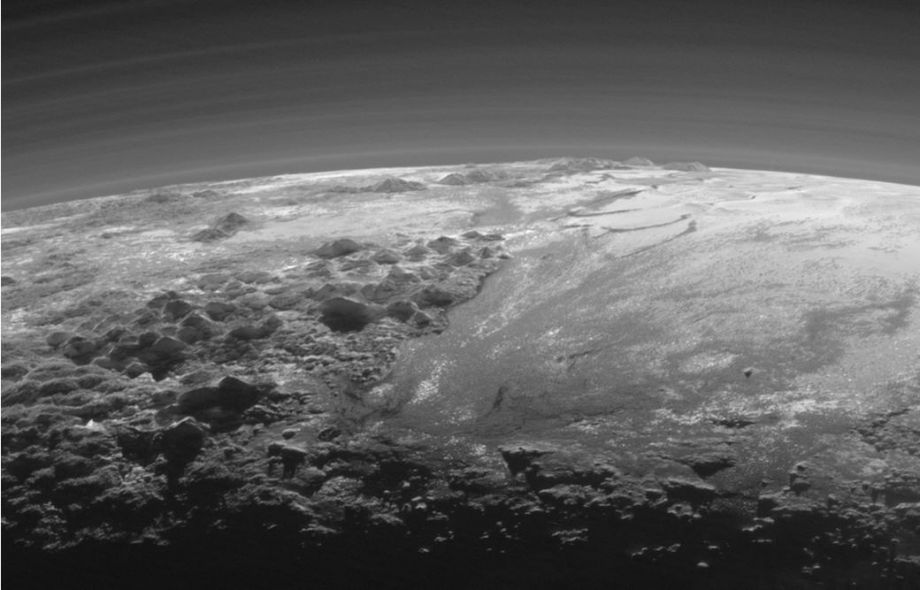 |
| Before the New Horizons spacecraft flew by Pluto, our pictures showed very little detail; we thought the pair might look like the artist's concept to the left:(From M. A. Garlick http://www.space-art.co.uk/index.html). How wrong we were!! To the right is a picture of the real Pluto obtained with New Horizons (credit NASA, JHUAPL, SWRI, http://pluto.jhuapl.edu/). The haze over the limb of Pluto is due to its atmosphere, while the surface is covered with mountains and plains with complex features! To the right is Sputnik Planum, smooth with few craters indicating it was resurfaced after the major planet-building intense-cratering era, in fact maybe only a few hundred million years ago, but how that happened is not known. To the left are mountains; how they were raised is also a mystery. The headlines tell the story: | |
| Mind-blowing Pluto has ice mountains and water: It had been downgraded to a dwarf planet. It looked like a fuzzy blob in our best telescopes. And it was often referred to as just an icy orb. Even scientists working on the first mission to Pluto expected to find an old, pockmarked world. But Pluto is turning out to be full of surprises. - CNN News, Amanda Barnett, July 16,2015. The first close-up image of Pluto has revealed mountains as tall as the Rockies, and an absence of craters -- discoveries that, to their delight, baffled scientists working on NASA's New Horizons mission - The New York Times, Kenneth Chang, July 15, 2015 |
Why are the scientists delighted to be baffled?? Explaining Pluto is going to take a lot of work and will uncover aspects of the outer solar system we never even guessed before we had these pictures. |
|
|
| Charon also turned out to have complicated geography. (credit NASA, JHUAPL, SWRI, http://pluto.jhuapl.edu/). It has the expected impact craters, but also long, icy canyons - the largest is twice as long, twice as wide, and more than twice as deep as the Grand Canyon - and a discolored area, probably the product of a large impact. |
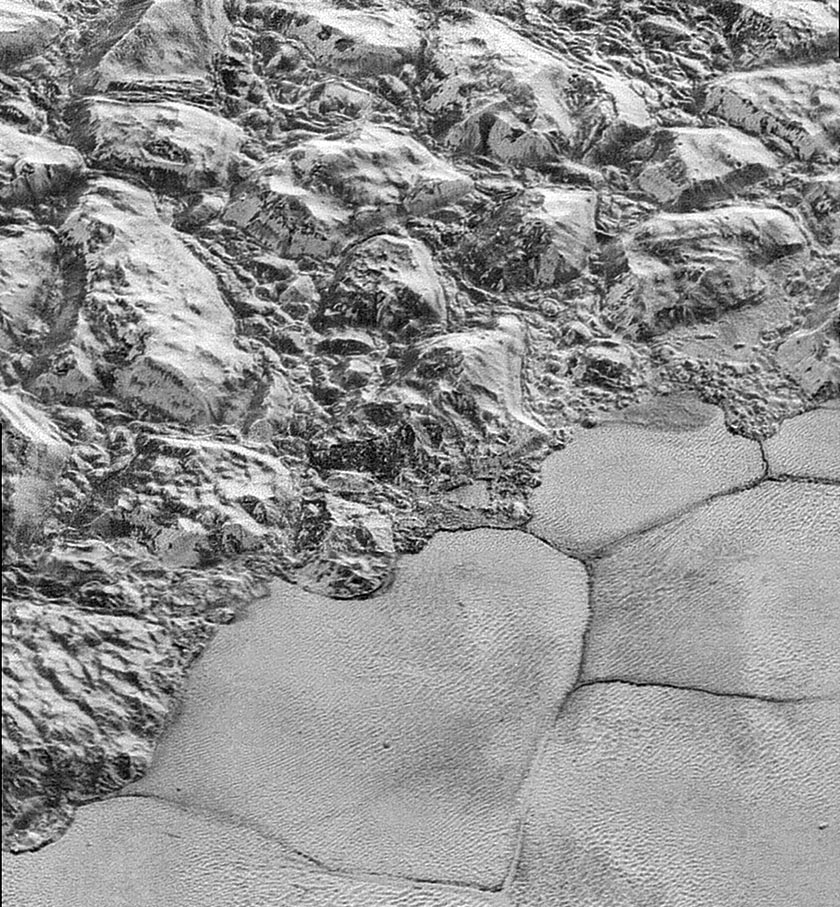 |
| Here is a closeup of the complex surface geography on Pluto. (credit NASA, JHUAPL, SWRI, http://pluto.jhuapl.edu/). This region to the lower right looks like it was once liquid or "mud" (but how is that possible for a body as cold as Pluto?) with a mountainous shoreline. |
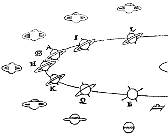 Huygen's drawing explaining the various aspects
of the rings of Saturn. http://www.surveyor.in-berlin.de/himmel/Bios/Huygens-e.html Huygen's drawing explaining the various aspects
of the rings of Saturn. http://www.surveyor.in-berlin.de/himmel/Bios/Huygens-e.html |
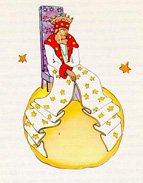
Asteroid with its king, from The Little Prince, http://www.poetryfountain.com/littleprince.html. |
|
Click to return to syllabus |
||
| Click to return to Outer Solar System Moons and Rings | hypertext |
Click to go to Solar System Debris |